This is a photo of the crashing waves of the ocean. Because the ocean holds so much of the Earth's water, it is the greatest source of evaporated water to the atmosphere.
Click on image for full size
Corel Photography
Evaporation
One process which transfers water from the ground back to the atmosphere is evaporation. Evaporation is when water passes from a liquid phase to a gas phase. Rates of evaporation of water depend on factors such as solar radiation, the temperature, humidity, and wind.
Water that is held in lakes and rivers evaporates directly into the atmosphere, but some of the water in the ground may also be returned to the atmosphere by way of evaporation through the soil surface. Of course, the ocean is the greatest source for water evaporated into the atmosphere.
In addition to evaporation, the process of transpiration also transfers water stored in vegetation from the leaves into the atmosphere.
You might also be interested in:

Rivers are very important to Earth because they are major forces that shape the landscape. Also, they provide transportation and water for drinking, washing and farming. Rivers can flow on land or underground
...more
Rain is precipitation that falls to the Earth in drops of 5mm or greater in diameter according to the US National Weather Service. Virga is rain that evaporates before reaching the ground. Raindrops form
...more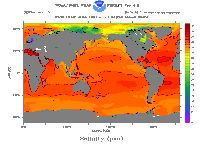
About 70% of the Earth is covered with water, and we find 97% of that water in the oceans. Everyone who has taken in a mouthful of ocean water while swimming knows that the ocean is really salty. All water
...more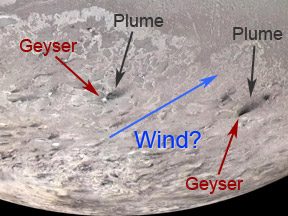
Triton, by far the largest moon of Neptune, is slightly smaller than Earth's Moon. Triton has the coldest surface temperatures in our Solar System. Surprisingly, this frigid moon has an atmosphere, albeit
...more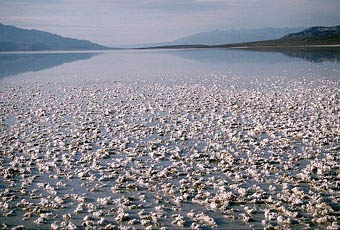
Like other types of sedimentary rocks, chemical rocks form at the Earth’s surface, are usually found in horizontal layers, and do not form from molten rock. However, unlike most other sedimentary rocks,
...more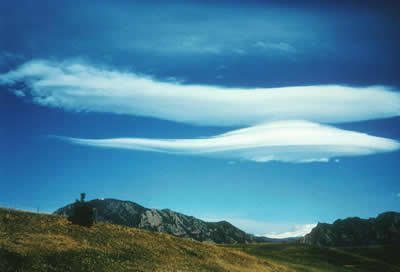
Lenticular clouds form on the downwind side of air flowing over a large mountain or mountain range. Unlike most clouds that move across the sky, lenticular clouds stay in one place as air appears to blow
...more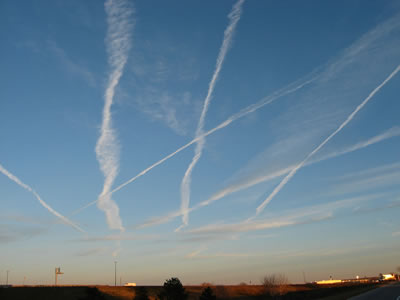
The white streaks you see coming off high-flying jet airplanes are called contrails, which is short for condensation trail. Contrails are clouds that form when water vapor condenses and freezes around
...more















